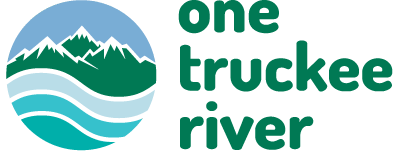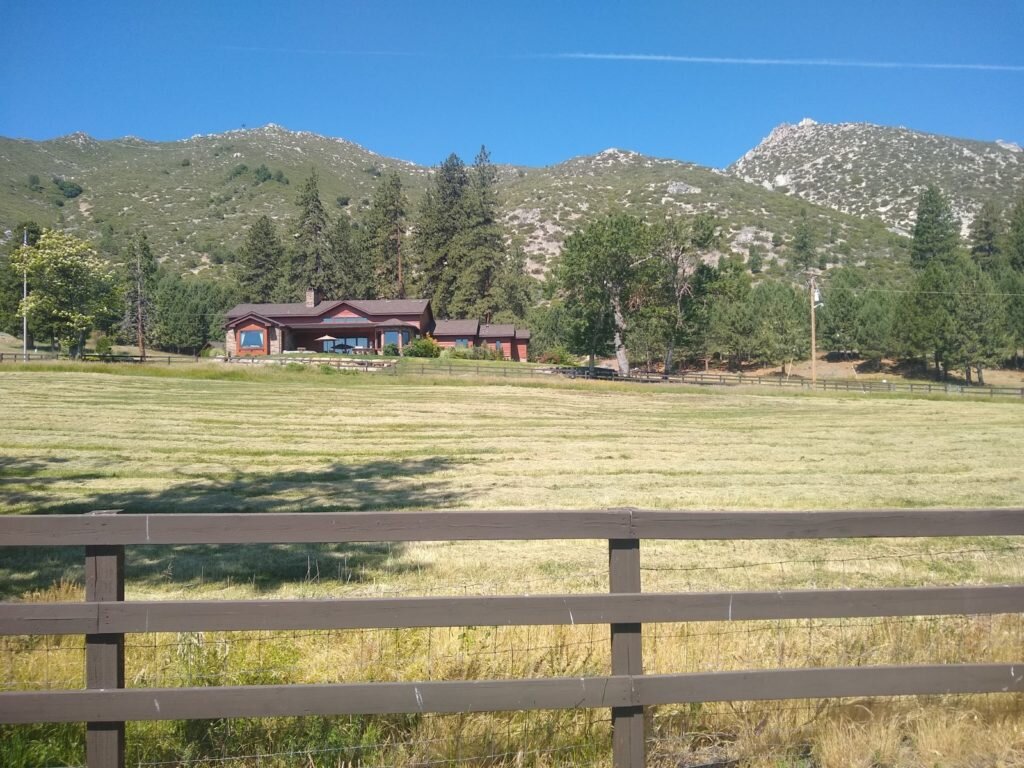River-Friendly Landscaping Part 5: Firescaping
The summer weather is heating up, and we’ve already had several Red Flag Warnings and small brush fires. It’s officially wildfire season in Northern Nevada!
Want to breathe easy knowing you and your yard are prepared? In this, the fifth of our River-Friendly Landscaping series, we’ll cover how Firescaping your yard can play an important role in promoting a healthy watershed while protecting your home from fire.
But before we dive into the details of Firescaping , let’s discuss the effects fire can have on our watershed. While we’re all acutely aware of the social and economic impacts when people lose homes and are displaced by wildfire, there are also long-term environmental impacts that affect watersheds that don’t get as much media attention.
Water Quality
Ecologist Chris Williams examines water monitoring equipment in Waterton Lakes National Park in Alberta, Canada to track nutrient levels and sedimentation after a major wildfire. Photo: ED STRUZIK / YALE E360
First, let's talk about impacts to water quality. It’s obvious how wildfire alters vegetation, often leaving behind bare soil. What may not be so obvious is how lack of vegetation then affects local water quality. Without plants to hold the soil in place, sediments can easily erode when it rains. All those sediments flow into streams and rivers, muddying the water and increasing turbidity. Build up of sediment can also diminish reservoir capacity over time, which is particularly important in our area where we rely on reservoir storage to supply water through the hot summer months. Ash also contaminates water and can change the pH, and in extreme cases where residential areas burn (i.e. Tubb Fire and Camp Fire), there can be a multitude of toxic chemicals contaminating water supplies.
Aquatic Wildlife Impacts
Dead rainbow trout (
Oncorhynchus mykiss
) in the Big Tujunga Watershed during the 2009 Station Fire, California. Photo: USGS.
One would think that fish would be safe from wildfire. After all, isn’t the water the safest place to be during a fire? But, while fish may survive the blaze, they have to live in low quality water that often results after a wildfire. The degraded water quality also affects macro-invertebrates, which are a primary food source for many fish. Without food to eat and clean water to live in, fish populations can decline after a wildfire. This is important to consider in our watershed, where we have threatened, endangered, and endemic fish species.
Ecosystem Conversion
Cheatgrass infested rangeland in Northern Nevada. Photo:
at the
A discussion of fire’s long-term environmental impacts in the Great Basin wouldn’t be complete without talking about cheatgrass (Bromus tectorum). This invasive grass comes from Europe, and has spread through sagebrush steppe plant communities, partly due to how well adapted the plant is to disturbance and fire.
Cheatgrass can blanket large areas between native shrubs, and when it dries out in the summer months, it can easily catch fire. Once an area has burned, cheatgrass recovers quickly and out-competes native shrubs because it produces a lot of seeds that survive the fire, germinate, and then grow quickly in the fall. On the other hand, most native species don’t start growing until the following spring, and even if some natives start to grow in the burned area, the increasing population of cheatgrass makes it more likely that fire will occur again before the natives have had a chance to reestablish and produce seeds. After repeated frequent fires, the natives die off and are completely replaced with cheatgrass. This converts ecosystems from sagebrush steppe to annual grasslands, and is reshaping the rangelands of the west and reducing habitat for species like the sage grouse.
Now that you know about some of the unique environmental impacts that wildfire poses in our watershed, it’s easy to see why protecting our watershed from large-scale wildfires is important. And the great thing is that you can help from the comfort of your own yard.
What is Firescaping?
Firescaping is landscape design that reduces a home or property’s vulnerability to wildfire. When we use firescaping principles, you not only protect your home but also help reduce the potential for wildfire ignition and keep our watershed healthy. Here are some key principles to consider:
First, evaluate your site to identify features that increase your fire risk
Are you close to wildland areas? If so, you are on the urban-wildland interface and should make firescaping a priority!
Do you live on a slope? Fires burn faster up slopes.
Which direction to the predominant winds come from? You’ll want defensible space on that side.
Homes like those in this neighborhood on Franktown Road in Washoe Valley are an example of areas highly susceptible to wildfire because they are on the edge the urban wildland interface, on slopes, and subject to high winds. Photo: Carrie Jensen/OTR
Create defensible space
The first 30’ around structures is the first zone to prioritize for firescaping.
Next consider the 100’ zone, if applicable.
Plant selection
Lupine is an example of a drought-tolerant plant to consider around your house.
Consider plants that store their own water, like succulents and cacti.
Avoid coniferous trees, like junipers and pines, in the 30’ zone. Instead choose deciduous trees, which are less likely to ignite because their leaves hold more water.
Choose plants that aren’t oily or resinous.
Generally avoid tall plants adjacent to the house.
Prioritize herbaceous perennials instead of woody plants.
For some plant suggestions, see this US Forest Service Guide. There are many drought-tolerant natives to consider, such as currants, yarrow, penstemon, serviceberry, lupine, and goldenrod.
Patios provide buffer to possible wildfires.
Use hardscaping, such as patios and driveways adjacent to homes, especially in previously identified vulnerable areas. And if you’re going to spend the money on new hardscaping, consider permeable options (read more about them in our previous blog).
While large lawns are not encouraged in River-Friendly Landscaping, because they require lots of nutrient inputs that can cause water pollution, when used in limited and strategic locations, they can provide great areas for kids to play while also providing a fire break.
Low Impact Development (LID) features like rain gardens and dry swales (read more about them in our previous blog) not only help keep water onsite and protect our watershed from non-point source pollution, but they can be incorporated into a design to provide fire breaks.
Keeping things properly watered
Make sure your irrigation system is in good working order.
If you’re a good watershed steward, you’ve already prioritized keeping water onsite. When you do this, you help retain soil moisture. This leads to healthy plants with higher moisture content, which are less susceptible to fire.
Maintenance!!!!
Don’t let branches overhang structures. If needed, have trees trimmed by a certified arborist (see our previous blog about arborists).
Trim out dead branches from trees and shrubs.
Pull and dispose of dry grass and weeds.
Keep your gutters clean.
Other best practices
Don't stack wood close to your house. Flickr photo courtesy
.
Don’t stack large amounts of wood close to your home or under the deck.
Be careful with fire! Don’t leave barbecues, outdoor fireplaces, and fire pits unattended. Always have water, shovel, and fire extinguisher handy.
Only burn brush piles or debris when permitted. Check with Truckee Meadows Fire Protection District for more information.
Properly dispose of cigarettes!
Make sure you have a fire evacuation plan in place.
Sources:
USGS, Wildfires & Water Quality
Forest Service: Fire Effects Information System (FEIS)
Yale: How Wildfires are Polluting Rivers and Threatening Water Supplies
RGJ: America's 'Sagebrush Sea' in the West is going up in smoke. Will anyone help?
UNR Cooperative Extension: Firescaping Landscape Design For Defensible Space








